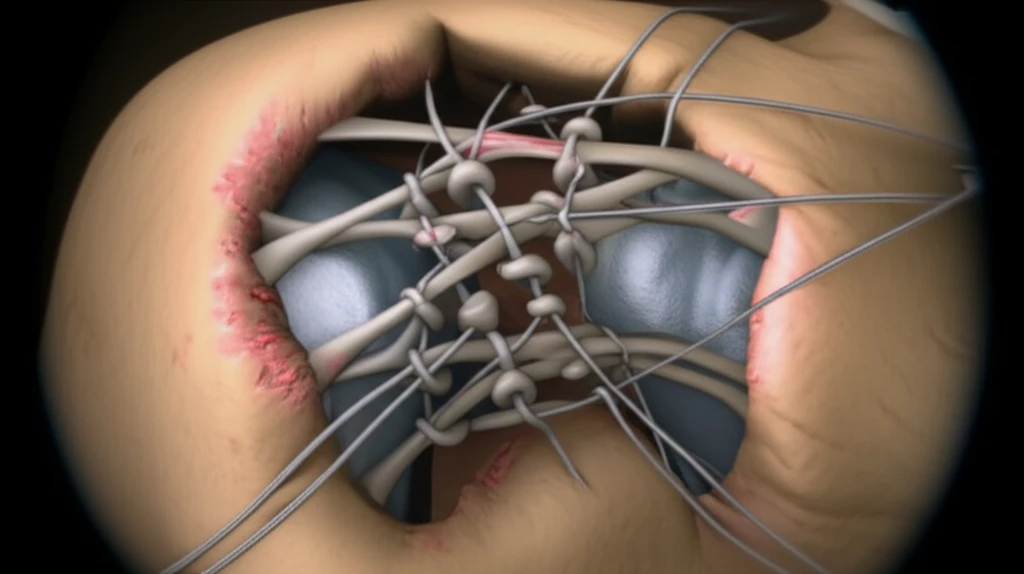
Rotator Cuff Repair: Is Knot Tying Necessary?
"A new study examines if arthroscopic rotator cuff repair techniques with or without medial knot tying impacts clinical and structural outcomes."
Rotator cuff tears are a common issue, affecting a significant portion of the adult population, especially as we age. When conservative treatments don't provide relief, surgery becomes a viable option. Arthroscopic rotator cuff repair (ARCR) is well-regarded for restoring function and alleviating pain, but the risk of re-tears remains a concern despite advancements in surgical techniques.
The suture bridge technique has become increasingly popular in ARCR as surgeons seek to improve initial fixation, maximize the contact area between the tendon and bone, and enhance mechanical stability during healing. This method often involves knot tying in the medial row due to its perceived biomechanical advantages. However, some research suggests that medial tying might lead to strangulation and other complications.
A recent study has explored and compared clinical results of suture bridge techniques, considering both functional and structural outcomes. The aim was to determine whether knot tying in the ARCR impacts structural integrity and overall success rates. By examining these factors, healthcare professionals and patients can make more informed decisions about rotator cuff repair strategies.
Knot Tying in Rotator Cuff Repair: Does It Really Matter?

A study published in the Journal of Orthopaedic Surgery and Research investigated the impact of medial knot tying in arthroscopic suture bridge rotator cuff repair. The researchers compared outcomes in patients who underwent ARCR using suture bridge techniques with medial knot tying (WMT group) to those without medial knot tying (WOMT group).
- Clinical Improvements: Both WMT and WOMT groups showed significant improvements in JOA and UCLA scores from before surgery to 24 months post-surgery.
- No Significant Clinical Difference: There was no significant difference in clinical outcomes between the two groups at any point during the 24-month follow-up.
- Similar Retear Rates: The incidence of postoperative retears (Sugaya types 4 and 5) was similar between the WMT and WOMT groups at 3, 12, and 24 months.
- Healing Differences: Complete healing (Sugaya type 1) was observed more frequently in the WOMT group at 24 months postoperatively (P = 0.024).
- Incomplete Healing: Incomplete healing (Sugaya types 2 and 3) was more common in the WMT group at 24 months (P = 0.024).
Implications for Rotator Cuff Repair Techniques
While both suture bridge techniques provide similar clinical benefits, the study indicates that medial knot tying may lead to less complete tendon healing at 24 months post-surgery. Surgeons should consider these findings when selecting a repair technique, especially for patients where long-term structural integrity is a major concern. Further research may explore alternative methods to enhance tendon healing and improve patient outcomes.
